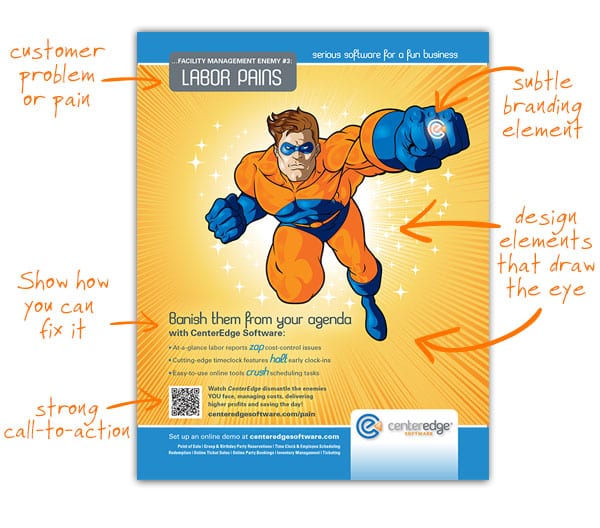Remember when you were a kid and you liked to play the games on the…
Best practices for B2B Trade Print Advertising
Even in our internet-centered world, trade print advertising still has value for B2B marketing directors—how much depends on the industry, your ad’s effectiveness and how well you leverage the message across other channels. Since print isn’t cheap, consider these best practices to help you make the most of it (hint: they’re likely to boost results across all your channels, too):
1. Keep your messaging simple, focused and distinctive. One of the biggest problems we see in B2B marketing is message stuffing—that’s when your ad starts reading a lot like a script for a certain cutlery infomercial…instead:
- Choose the single customer problem or pain point that you know (or believe) will attract leads that, if converted, you’ll have the best chance of turning into repeat customers.
-If you have more than one key pain point, dedicate one ad per point; the more you try to stuff your ad with solutions, the fewer your readers will remember.
- Show how you can fix it, using descriptive benefit language and/or graphics like the headline in the ad above.
- Spring for good-quality design. Pros know how to guide your reader’s eye through your message, create visual “pauses” so readers can reflect on key points and create a look that reinforces your branding and differentiates you from your competitors.
-An effective, professional ad can be run repeatedly, so when you amortize the design cost, there’s a minimal addition to your media budget—one that pays off big.
- Design and write your ad in a way that wouldn’t work for any of your competitors, and that will make your customer feel happy and ready to trust you as far as the next step in your process. Even in the entertainment center industry, this tongue-in-cheek character stands out, yet the heavy emphasis on readers’ pain points keeps their needs front and center.
- Then make it easy for people to take that next step with a strong call-to-action: Download info at… Call today… View our video.
2. Emphasize repetition across media, not just within one channel.
Make those visual and copy messaging themes and elements you invested in work even harder: Use them in all your key channels (varying them to fit the context of the medium, of course).
Social networking, broadcast, banner ads, videos, trade shows, email, DM, signage… wherever your audience is reading, watching and searching, repeat and build on your story. That’s the best way to ensure you’re top of mind when your prospect is feeling the heat of that key pain point you’re highlighting.
3. Encourage engagement, sharing and feedback.
Nurture people’s desire to be “in the know.” Increasingly, people are using social media to position themselves as knowledgeable experts to future employers and clients by being information-sharers—preferably of information that benefits others and shows they’ve got valuable scoop, too. So if they see you or your solution as share-worthy, passing it along to peers can add to their influencer cred.
Why not make it easier for them to make you both look good? Create messages that are memorable and/or informational (not just sales-y), and incorporate them into easy-to-share media whenever you can. Drive traffic to landing pages, video, social sites and posts that are ripe and juicy for sharing (just don’t forget to make the most of their interest by using best practices in lead capture too, of course… but that’s for another post)!
Use these best practices to put your best foot forward and your trade print ads will work hard to intrigue prospects and generate fresh leads for your sales force.



